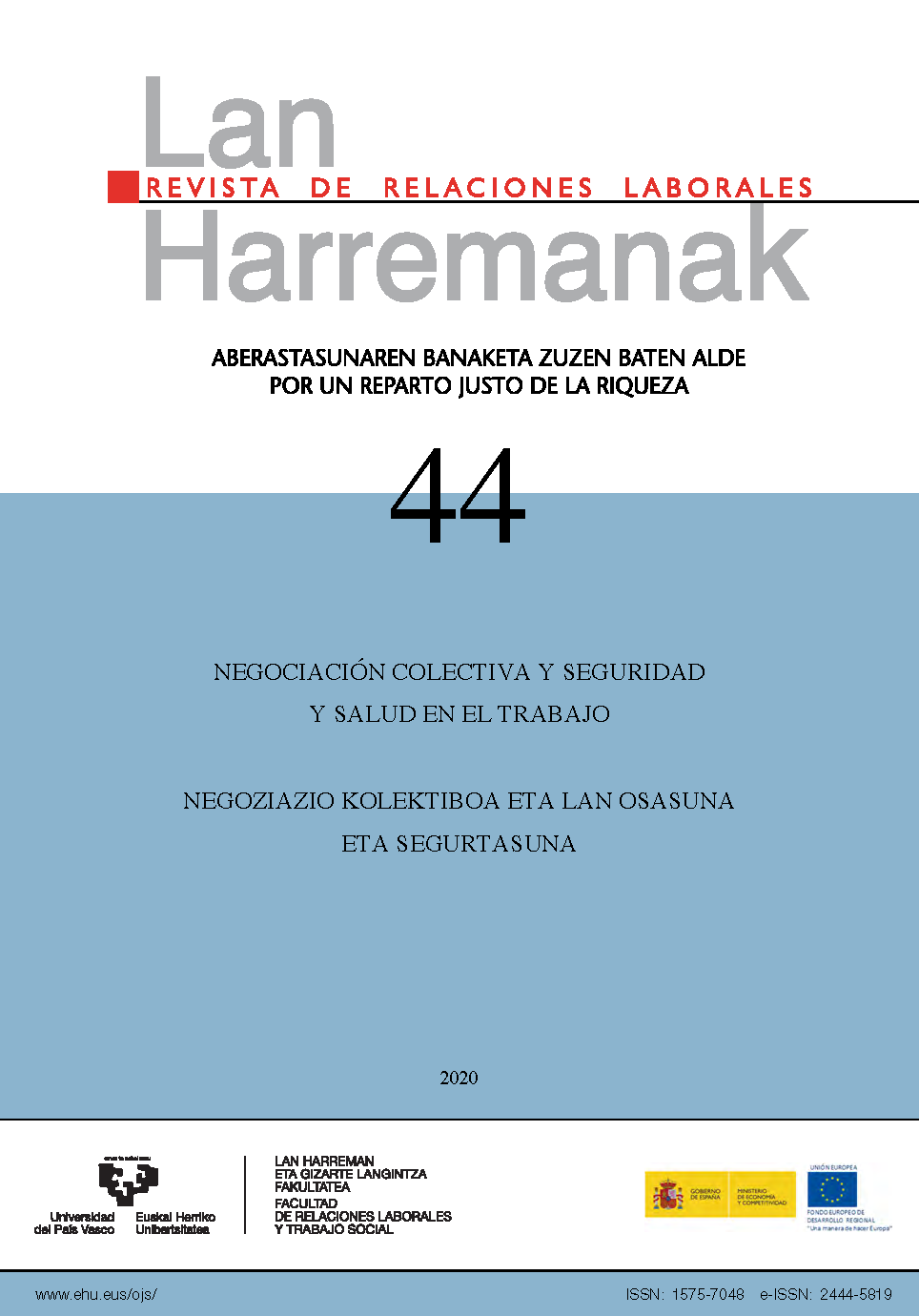Availability time, its calculation as effective working time and its regulation in collective bargaining
##plugins.themes.bootstrap3.article.main##
##plugins.themes.bootstrap3.article.sidebar##
Abstract
The aim of this study is to analyse the effective working time concept to define it in accordance with the employees’ protection of the health and safety. For it, we analyse the European and Spanish courts resolutions about which timescales should be included on it and, specifically, the journey times and the availability times. All of it will be done with a study of the collective bargaining role to regulate the working time and the specific clause among the collective agreements.
How to Cite
##plugins.themes.bootstrap3.article.details##
Working time, availability, attendance time, collective bargaining
Authors who publish in the journal "Lan Harremanak" do so in agreement with the following terms:
1. Authors retain the copyright of their papers. while ceding to the journal "Lan Harremanak" the right to the first publication of their article.
2. The publisher UPV/EHU Press is a joint copyright holder, in order to protect the legitimate use of the published paper and compliance with CC terms.
3. Published papers are subject to a Creative Commons CC-BY license (unless stated otherwise) which permits third parties to share the paper, on the condition that the author and source are specified when material is reproduced.
4. Authors can enter into other non-exclusive license agreements regarding the published version of their work (e.g. depositing it in an institutional repository or re-publishing it as a monographic volume), providing the author and source are given appropriate credit.
5. Dissemination of submitted articles via Internet is both allowed and recommended (e.g. in institutional repositories and/or on the researcher's web page), both before and during the process of submission, since this can lead to interesting dialogues and also increase citations to the eventual publication.


 http://orcid.org/0000-0003-4033-3611
http://orcid.org/0000-0003-4033-3611